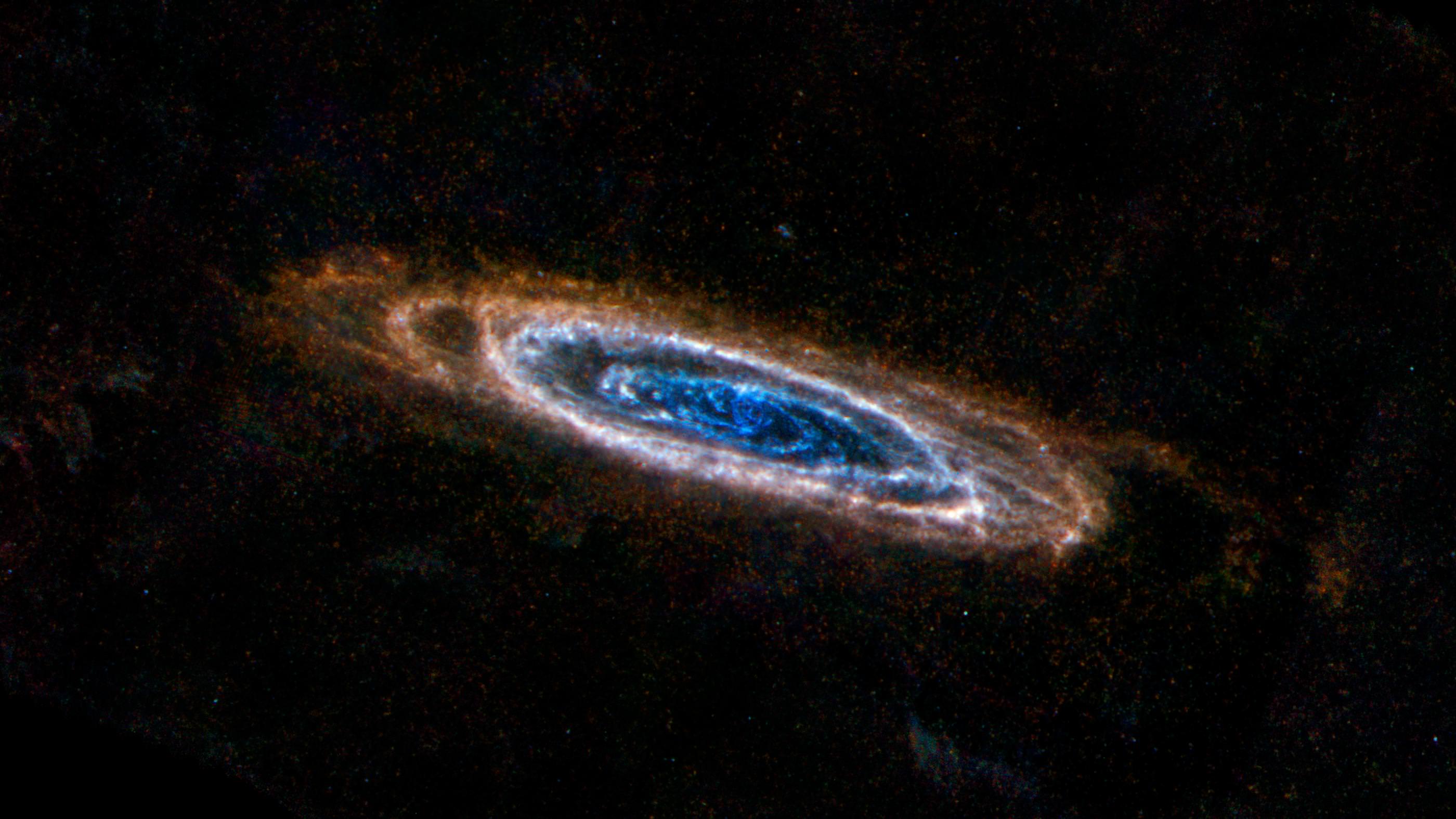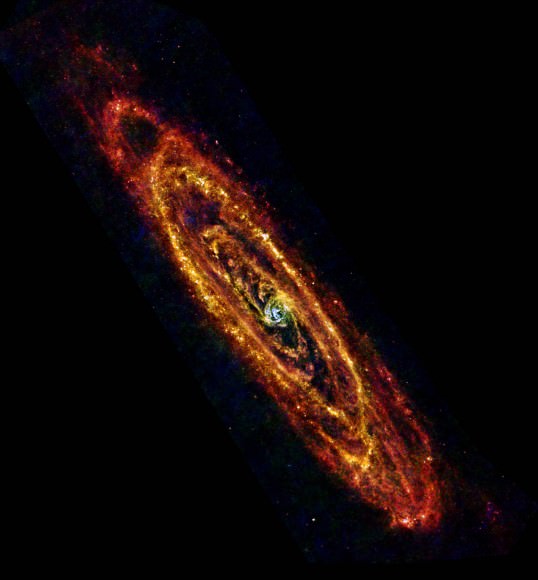Cold rings of dust are illuminated in this image taken by Herschel’s Spectral and Photometric Imaging Receiver (SPIRE) instrument. Credit: ESA/NASA/JPL-Caltech/B. Schulz (NHSC)
Looking wispy and delicate from 2.5 million light-years away, cold rings of dust are seen swirling around the Andromeda galaxy in this new image from the Herschel Space Observatory, giving us yet another fascinating view of our galaxy’s largest neighbor.
The colors in the image correspond to increasingly warmer temperatures and concentrations of dust — blue rings are warmer, while pinks and reds are colder lanes of dust only slightly above absolute zero. Dark at shorter wavelengths, these dust rings are revealed by Herschel’s amazing sensitivity to the coldest regions of the Universe.
The image above shows data only from Herschel’s SPIRE (Spectral and Photometric Imaging Receiver) instrument; below is a mosaic made from SPIRE as well as the Photodetecting Array Camera and Spectrometer (PACS) instrument:
“Cool Andromeda” Credit: ESA/Herschel/PACS & SPIRE Consortium, O. Krause, HSC, H. Linz
Estimated to be 200,000 light-years across — almost double the width of the Milky Way — Andromeda (M31) is home to nearly a trillion stars, compared to the 200–400 billion that are in our galaxy. And within these cold, dark rings of dust even more stars are being born… Andromeda’s star-making days are far from over.
Read more: Star Birth and Death in the Andromeda Galaxy
Herschel’s mission will soon be coming to an end as the telescope runs out of the liquid helium coolant required to keep its temperatures low enough to detect such distant heat signatures. This is expected to occur sometime in February or March.
Herschel is a European Space Agency cornerstone mission with science instruments provided by consortia of European institutes, and with important participation by NASA. Launched May 14, 2009, the telescope orbits the second Lagrange point of the Earth-Sun system (L2), located 1.5 million km (932,000 miles) from Earth. Read more from the Herschel mission here.


